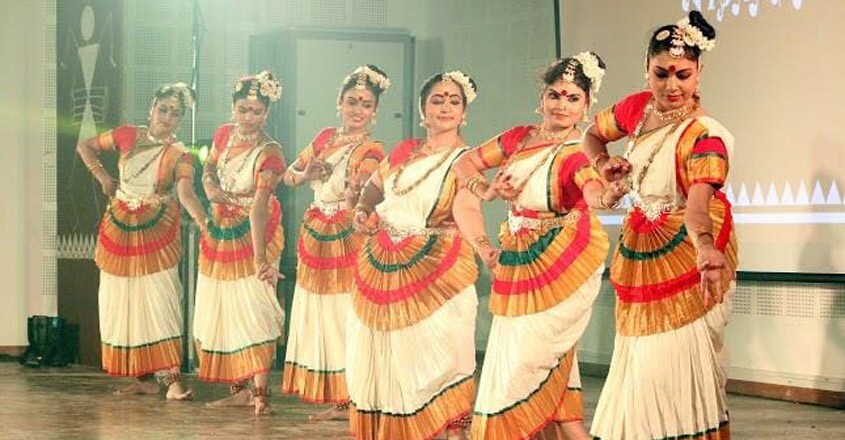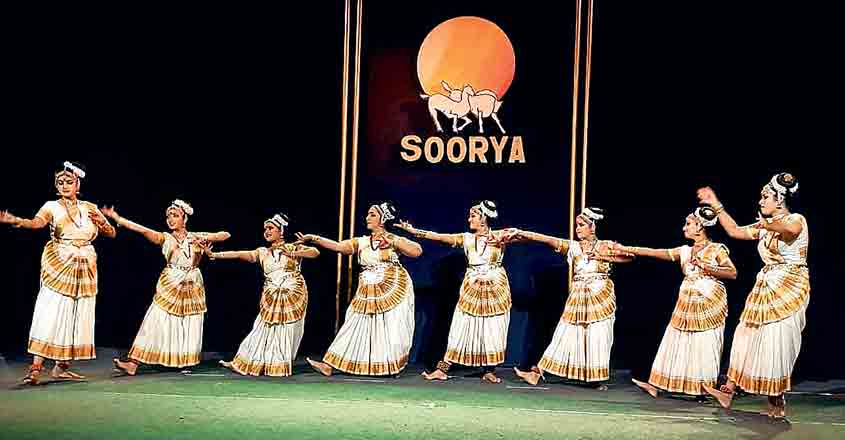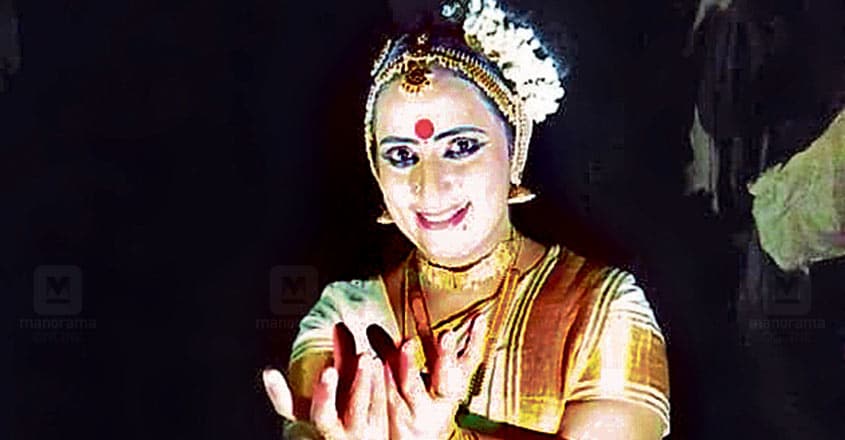Meet Silvy who trained her NISH students on a unique dance form

Mail This Article
“Sometimes they embrace us and plant kisses on our cheeks. I cannot express how happy I am then,” when Silvy says this there is a unique gleam in her eyes. Silvy Maxi Mena, a teacher at the National Institute of Speech and Hearing (NISH), believes in the great power of silence which gets transformed into a beautiful language of the hearts. It was using this language of love that she taught her students ‘mudranadanam’, a unique dance recital.
Many wondered how Silvy teacher was going to train the speech and hearing impaired students in dance. “For them, the music is in their hearts. They listen to that rhythm and dance to it,” says Silvy. However, she confesses that she wasn’t very hopeful, in the beginning, about the effectiveness of such a unique training program. But, her students created magic on stage with the perfect mudras and gestures.
Mudranadanam is a unique artistic concept developed by Silvy teacher which enables the students of NISH to overcome their impairments with other talents and sensibilities. It is a unique dance form just like the Mohiniyattam and the Kerala Nadanam. It took years for Silvy to delve deep into it and arrange it in the present form. Interestingly, Mudranadanam must be a first of its kind in the world, created for hearing and speech impaired individuals.

The students of NISH presented the Mudranadanam for the first time, in December last year, at the Soorya Festival which is touted as the biggest art and cultural event in Asia. Silvy teacher speaks to Manorama Online about Mudranadanam and her experiences in training the students of NISH.
What is mudarnadanam

Mudranadanam is a dance form which is taught to the students with hearing impairment using sign language. Silvy, an English teacher at NISH, says that such students communicate using fewer words that regular people, as the former uses signs and gestures for communication. Besides, they do not have much experience enjoying or indulging in arts and literature. “They were first taught to sing the National Anthem in the sign language. The students did that amazingly. Later, they began doing the Vande Mataram and the National Anthem regularly in the school assemblies. I realized that there was rhythm in the way they did that. Though they cannot hear, the rhythm of it was etched in their minds. They began dancing when they understood the rhythm. Later, we developed the Mudranadanam using the kritis of Swati Thirunnal,” explains Silvy.
Mudras on board
The lines of the kritis were first written on the black board. Silvy teacher then explained its meaning to the students in Malayalam and English. She says that it could be performed only if the students grasp the meaning well. They were able to emote with facial expressions or hand gestures only when they understood the meanings of the words. “The students should understand the lines and the idea. Only then could they perform it. I realized that their vocabulary was significantly increasing since we began training in mudranadanam. Teaching new words this way seemed easier and effective. In 2013, I was the state karate champion. I have been training the students in karate as well. The successful training of karate gave me the courage to teach them mudranadanam,” notes Silvy.
Though the dancers don the tradition attire of Mohiniyattam for mudranadanam, the mudras or gestures are quite different. Sign language has been used to choreograph this unique dance form. Silvy admits that she had compared this with Mohiniyattam. “In Mohiniyattam, the dancer may not use the gestures completely in some sections. However, in mudranadanam, we could choreograph every word using sign language. Every word can be expressed in sign language, so we could explore its possibilities in an amazing way. This is composed in a way which could be easily understood by the common people as well,” says Silvy.
Swati kritis and film songs
The kritis composed by Swati Thirunnal were mostly chosen for mudranadanam. These beautiful lines are filled with great love and reverence for the Almighty Lord. The kriti ‘Aliveni entu cheyvu’ was the first one to be taught to the students. It explains the significance of God in everyone’s life. Semi classical film songs like ‘Hridaya sarasile pranaya pushpame’ and ‘Oru pushpam mathramen’ too have been choreographed in mudranadanam. Meanwhile, patriotic songs like ‘Vaishnava Janatho Thene Kahiye Je’, ‘Raghupathy Raghava Raja Ram’ and ‘Ekla Chalo Re’ were presented in the contemporary style.
Magical performances
Silvy says that the students do not dance listening to the lines. However, they express and emote by grasping the meaning and idea of it. “It is actually very difficult to listen to these lines and perform. But, I don’t know how they are doing it. It indeed is awe inspiring,” Silvy says with excitement.
Mudranadanam was performed on 19th December 2019 at the Soorya Festival in Thiruvananthapuram. Soorya Krishnamoorthy, the well known theatre and cultural activist said that he was really impressed by the performance. Silvy too had danced with her students on stage. However, none of them did the steps by looking at Silvy. The teacher says that the students were extremely thrilled to perform this dance form. “You should have seen their happiness. They embrace us and give us kisses. It is very exciting,” Silvy too can’t hide her happiness.
For a friend
Silvy had studied at the CMS College in Kottayam where she had a friend who had hearing impairment. Silvy communicated with that friend using gestures and signs. “I had wished to learn the sign language since then. In those days, a woman would present the daily news in sign language in Doordarshan. I noticed it and learned the language. My family members used to wonder why I was keenly interested in sign language,” says Silvy.
It was in 2012 that Silvy began contemplating about Mudranadanam. Silvy says it took her years to choose the appropriate kirtans to be choreographed. Though it was introduced in NISH in 2016, she had begun the preparations well in advance. All the mudras in this dance form are in sign language. The students really liked this approach and they were eager to learn the dance form. “I joined NISH as a teacher in 2011. I have been trying to teach them the way they like. My classes are mostly activity based,” says Silvy.
The rhythm of signs

“I was truly inspired by the fact that the students learned songs in the correct rhythm. I tried teaching them film songs first. I began thinking about composing Swati thirunnal kirtans after they did the film songs well. It is extremely difficult for even us to understand the meaning of these kritis. For instance, I didn’t know the meaning of the word ‘Malayajam’. After searching for long, I understood that the word meant ‘sandal’. It would take us quite a lot of time to understand the meaning of the words and lines. After that, I converted them into sign language,” explains Silvy.
“It is also important to see how much these words can be connected to the rhythm, as the students would be taught in that unique rhythm. If it goes out of tune, then nothing works out. I teach them karate as well. The students are really interested in arts and sports. I try to teach them these in sign language,” says Silvy.
It was at her home that Silvy had tried Mudranadanam for the first time. Her confidence grew when her husband and daughter appreciated her for coming up with such a unique dance form. It was her husband who suggested the name Mudranadanam for this dance form. Silvy says that she really liked the name as it is mostly done using mudras or signs / gestures. Silvy credits her husband Maxi Vishwas Mena and daughter Kripa for lending her their wholehearted support. They even chip in with suggestions about the makeup and attire of the Mudranadanam.

